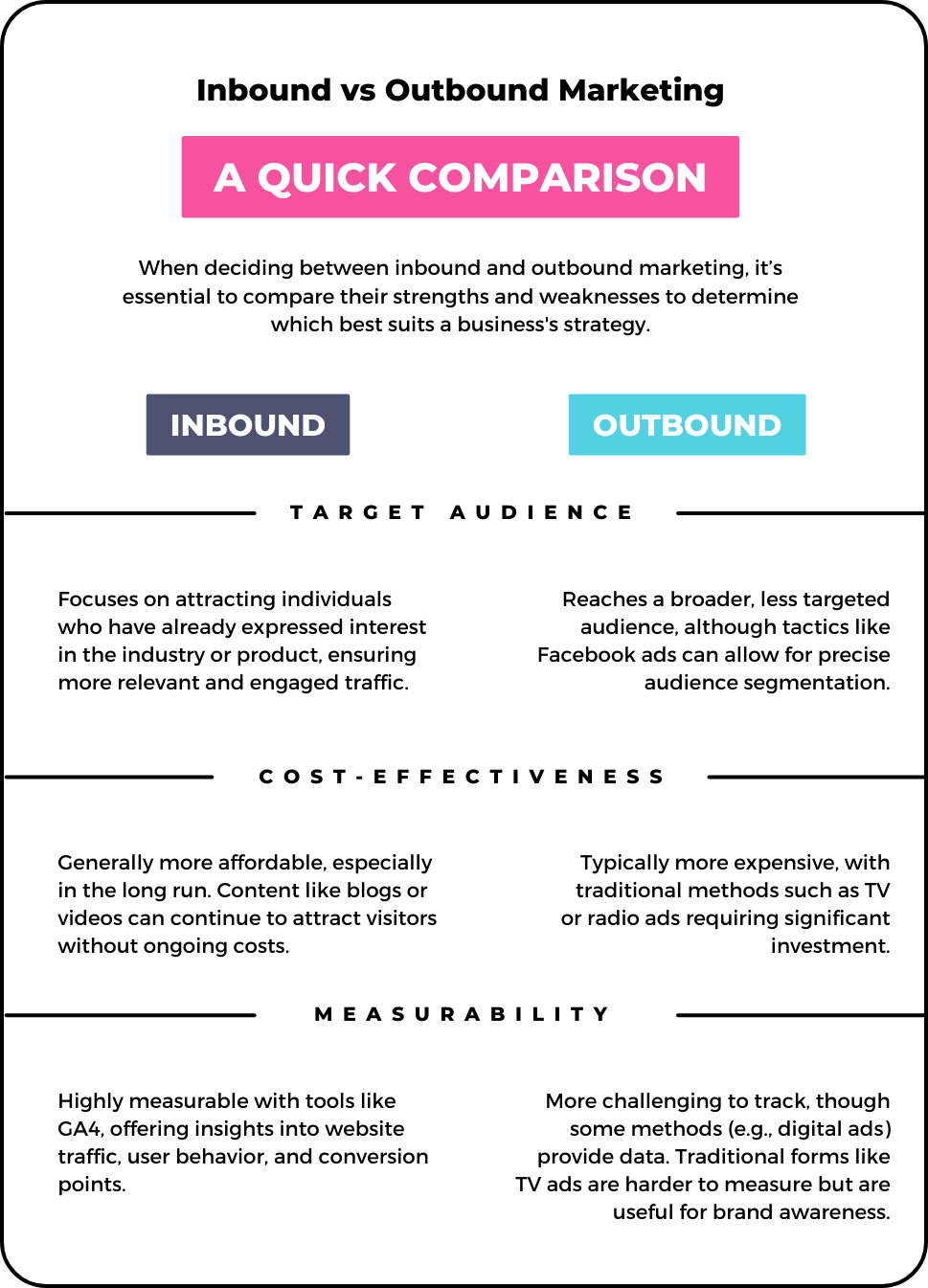
Businesses often face a tough choice: should they focus on inbound or outbound marketing? Both strategies have strengths, however, which will deliver the best return on investment (ROI) is the deciding factor for many businesses. So let’s break down their effectiveness and mode of targeting for an apt approach to elevate the marketing game.
What is Inbound Marketing?
Inbound marketing isn’t just a strategy—it’s a mindset focused entirely on the target audience. The goal is to create valuable, relevant content that speaks directly to the needs and interests of target customers.
Instead of chasing after leads, it attracts them naturally by offering solutions and insights they’re already searching for. Over time, this builds trust and familiarity, turning casual visitors into loyal customers and, ultimately, brand advocates.

Inbound Marketing Key Components
What is Outbound Marketing?
Outbound marketing, often called “interruption marketing,” takes a more direct approach. Here, businesses initiate contact by pushing their message out to an audience, whether they’ve asked for it or not. Think of a flashy billboard in the city, a prime-time TV commercial, or an unsolicited email that lands in your inbox. The goal? Grab attention, even if it means disrupting what the audience is currently doing.

Outbound Marketing Common Channels


Take Away
To choose the right marketing strategy, businesses must first define their goals, whether it’s increasing brand awareness, driving sales, or improving customer retention. Understanding the target audience is equally important, as insights into their needs, challenges, and online behavior help tailor more effective marketing approaches. Tools like GA4, SEMRush, and surveys can provide valuable data to refine strategies. Budget considerations also play a crucial role in the decision-making process.
Inbound marketing is more budget-friendly but may take longer to show results, whereas outbound marketing, like TV ads or print campaigns, requires a larger investment but can yield quicker outcomes. Ultimately, assessing both goals and budget helps businesses select the strategy that best meets their needs.

